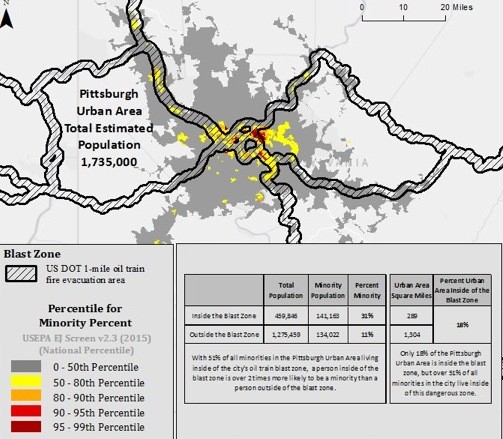Report says oil-train routes contribute to 'environmental racism' in Pennsylvania
Activist groups released a report this week, finding that a disproportionate number of low-income minority communities live within one-mile evacuation zones, or "blast zones," of oil-train routes.
The environmental groups ForestEthics and PennEnvironment, along with economic-justice group Action United, studied major urban areas in Pennsylvania through which oil-train routes cross — Philadelphia, Pittsburgh, Harrisburg and Reading.
“We used U.S. EPA’s methodology and US Census data to look at the threat to people living along oil-train routes, [and] our maps show that crude-oil trains add to environmental discrimination,” said Matt Krogh, ForestEthics extreme-oil campaign director, in a press release. “The danger of an explosion and lung disease from mile-long oil trains falls heaviest on families in environmental-justice communities — families who already live with more air pollution and the highest risk from industrial accidents.”
In the case of Pittsburgh, the report found that 31 percent of those living within blast zones are non-white. Eleven percent of the non-white population lives outside the blast zone, the report says. When looking at the Environmental Protection Agency's "environmental justice" communities — as defined by both race and income level — the report found that 70 percent of Pittsburgh's "vulnerable" low-income minority communities live within a blast zone. According to the report, blast zones in Pittsburgh make up 18 percent of the land mass.
The report's recommendations include: a moratorium on oil imports into Pennsylvania by train; that the U.S. EPA enforce statues prohibiting racial discrimination; that Gov. Wolf's administration assess risks from oil trains to environmental-justice communities; and that the Office of Emergency management discuss evacuation plans with communities inside of the "blast zones."


